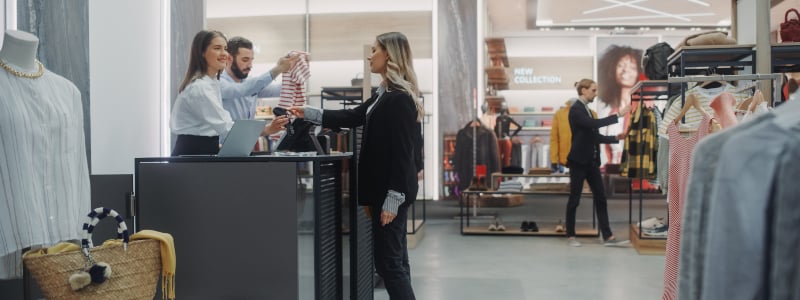Optimizing the Retail Returns Process
January often means the longest lines in the retail store are for returns. And, maybe ironically, those returns are regularly processed at the Customer Service desk. That right there — that’s an annual challenge.
Consumers entering a store to make a return or exchange are already feeling inconvenienced. They bought or received an item they can’t use, and they’re at the store to resolve that problem. When the line is long, or the process is difficult (requiring a receipt, original packaging, etc.), it inflames an already irritating experience.
So, what’s happening to make returns easier?
A recent Retail Dive report predicted consumers might return over $82 billion of goods this season. Some brands have opted to deter returns by making the process more restrictive, adding or increasing restocking fees or shortening return windows and policies.
However, customer satisfaction and brand loyalty are positively correlated with easy, flexible returns. And more opportunity resides there. Loyalty, and share of wallet, can be built on a returns process that is frictionless and free.
Alternative Approaches
Earlier this month, at the NRF 2024 expo, I heard perspectives from several retailers who offered another increasingly common method of handling returns: “Keep it.”
For less-expensive goods, some retailers are finding it cheaper to issue a credit — online or in-store — without receiving the undesirable item back. What to do with that too-colorful sweater you received last month? It becomes your “ugly sweater” for the holiday party next year, and you also get to select a replacement item you actually want.
But that model doesn’t work for all returns. Consider the customer who buys goods online and returns in store. That customer enters the physical store with a product; a good experience means leaving the store with an exchange rather than a return — and ideally, additional purchases.
What if the desire to exchange is there but stock isn’t? Offering the option to match an out-of-stock item with a potential return at another location eases the burden on reverse logistics and delivers for the customer, all while eliminating carrying cost and time for items headed back to a distribution center.
Visibility and optimizing the returns workflow are essential to make this drop-ship exchange work. What if the workflow could immediately alert a customer service associate of a match with customer demand at another location? At the moment the return is accepted, the associate could set the item in motion for a direct shipment to where it can meet a customer demand elsewhere. Instead of return shipping, the item remains in last-mile delivery, where it satisfies a customer quickly.
Empowering the retail associate with an enhanced workflow changes the returns process for staff and customers. It transforms the last weeks of peak return season into a source of operational efficiency, developing brand loyalty and improved customer satisfaction.

